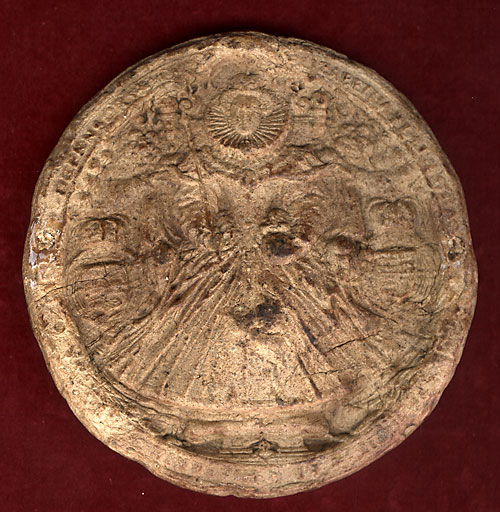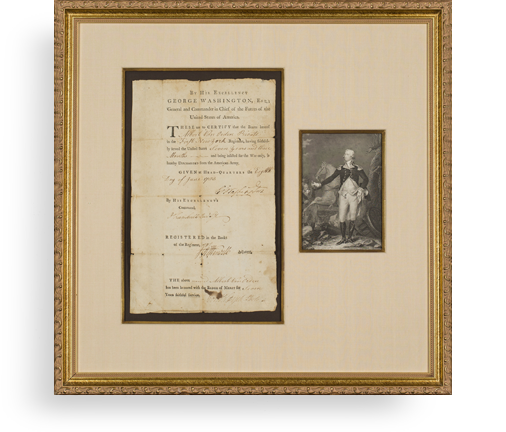The Great Seals of Queen Elizabeth I, Queen Mary I, King James I, King Charles I, King George III













A collection of 5 rare great English royal seals, some with the original documents still attached
Highlights:
Queen Elizabeth I – The Hilliard Seal
Son of an Exeter goldsmith and trained as a jeweller, Nicholas Hilliard was appointed Court Miniaturist and Goldsmith by Elizabeth I about 1570. He was head and shoulders above his contemporaries and dominated the field in his era. His finest artistic creation and the...
Highlights:
Queen Elizabeth I – The Hilliard Seal
Son of an Exeter goldsmith and trained as a jeweller, Nicholas Hilliard was appointed Court Miniaturist and Goldsmith by Elizabeth I about 1570. He was head and shoulders above his contemporaries and dominated the field in his era. His finest artistic creation and the one he is best remembered for today is his Great Seal of Queen Elizabeth, which was appended to significant documents to indicate the Queen’s assent. His was the second of three seals she had made during her long reign, and by all accounts the best.
The Seal is three-dimensional. Its recto shows the Queen circa 1584 on her Renaissance-era throne, the ruff curving up to support the face, the skirt thick with folds, the crown surmounting her curls, the full hands holding the royal insignia, and the royal coat of arms besides. The verso illustrates the Queen in profile riding on horseback.
This is an original Hilliard Seal in good condition, the relief still strong, the elements clear, but with age-toning and some loss of detail in the surrounding text and at a few points within the body. It is the first seal of Elizabeth we have had. It has been attached to a board so that only the recto is visible.
Queen Mary, On a pardon from 1553
Document, November 15, 1553, with a very uncommon original seal of Queen Mary I (most of which is still intact), displaying on one side the monarch on the throne and the other on horseback, pardoning him for all offenses committed prior to October 1, 1553, covering that early period of the change of power. These types of documents, with flourished text, are referred to as letters patent. They are generally unsigned.
How many Mary allowed to be issued is unknown, but this is the only pardon from Queen Mary we can find ever having reached the market, and one of only a handful of Mary letters patent that remain.
James I, His second Great Seal, on a pardon for alienation from 1613
Document with the Great Seal, Westminster, 22 June, 1613. A complete and relatively clear impression of the Great Seal, attached to the document by the original vellum tag. The document is a pardon of alienation for Andrew Bayninge, esquire in respect of a transaction between himself and Stephen Soame, Andrew Grey, and the latter’s wife, Thomasina, relating to lands in Hingworth, Calcott and Ashwell, Hertfordshire. Alienation was the transfer of a holding by sale rather than by inheritance. A licence was required from the lord, who would of course collect a fee. If the holding was from the Crown there were also licences and fees and fines for ‘pardons’. The functions of the Alienation Office were eventually transferred to the Treasury.
Charles I
Document (9 x 14.5 inches) with a fine example of the Great Seal (approximately 6 inches in diameter), the legends on both sides and the finer details quite distinct. Some slight flattening of the features on the recto. A license of alienation from William Vincent to Thomas Ireby, in respect to lands in Sheepey Magna, Leicestershire.

Frame, Display, Preserve
Each frame is custom constructed, using only proper museum archival materials. This includes:The finest frames, tailored to match the document you have chosen. These can period style, antiqued, gilded, wood, etc. Fabric mats, including silk and satin, as well as museum mat board with hand painted bevels. Attachment of the document to the matting to ensure its protection. This "hinging" is done according to archival standards. Protective "glass," or Tru Vue Optium Acrylic glazing, which is shatter resistant, 99% UV protective, and anti-reflective. You benefit from our decades of experience in designing and creating beautiful, compelling, and protective framed historical documents.
Learn more about our Framing Services

























































































































